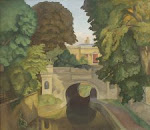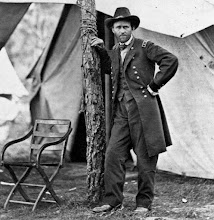I came upon the following information in Maurice Hewlett's essay "The Crystal Vase," which first appeared in the December, 1919, issue of The London Mercury. The essay begins as a discussion of the merits of various writers of published letters, journals, and diaries. However, it soon turns into an appreciation of the journals of Dorothy Wordsworth -- William's sister and Coleridge's friend. Hewlett notes: "We may see deeply into ourselves, but she sees deeply into a deeper self than most of us can discern."
Hewlett writes:
Coleridge was with them most days, or they with him [in the late winter of 1798]. Here is a curious point to note. Dorothy records:
"March 7th. -- William and I drank tea at Coleridge's. . . . Observed nothing particularly interesting. . . . One only leaf upon the top of a tree -- the sole remaining leaf -- danced round and round like a rag blown by the wind."
And Coleridge has in Christabel:
The one red leaf, the last of its clan,
That dances as often as dance it can,
Hanging so light, and hanging so high,
On the topmost twig that looks up at the sky.
Maurice Hewlett, A Green Shade: A Country Commentary (1920).
I have since discovered that her brother and Coleridge relied upon Dorothy Wordsworth's observations of nature on more than one occasion, putting them to use in their poetry. But it is best to go to the source and read her journals, which are indeed wonderful.
John Constable
"Hampstead Heath, Looking Towards Harrow at Sunset" (1823)
Monday, October 18, 2010
A Single Leaf (Revisited): Dorothy Wordsworth And Samuel Taylor Coleridge
Labels:
Coleridge,
Dorothy Wordsworth,
John Constable,
Wordsworth
Subscribe to:
Post Comments (Atom)




2 comments:
A man set out by bicycle from Clapham Common in 1913 in pursuit of spring. The book of that title published in April 1914 begins 'This is the record of a journey from London to the Quantock Hills to Nether Stowey, Kilve, Crowcombe, and West Bagborough, to the high point where the Taunton-Bridgwater road tops the hills and shows all Exmoor behind, all the Mendips before, and upon the left the sea, and Wales very far off. It was a journey on or with a bicycle. The season was Easter, a March Easter.' The man was a close reader of Christabel and Dorothy Wordsworth: on pg. 29 he states 'At any rate the Quantocks were to be my goal. I had a wish of a mildly imperative nature that Spring would be arriving among the Quantocks at the same time as myself that "the one red leaf the last of its clan," that danced on March 7, 1798, would have danced itself into the grave: that since my journey was to be in "a month before the month of May," Spring would come fast, not slowly, up that way. Yes, I would see Nether Stowey, the native soil of " Kubla Khan," "Christabel," and "The Ancient Mariner," where Coleridge fed on honey-dew and drank the milk of Paradise.' The man's name of course was Edward Philip Thomas, four years before the April Easter when his own leaf was blown from the tree.
That is wonderful, Mr. Thomson. I had no inkling of a connection between Edward Thomas and "the one red leaf." I cannot thank you enough for sharing this with us, and for doing so in such a beautiful fashion. Thank you indeed.
Post a Comment